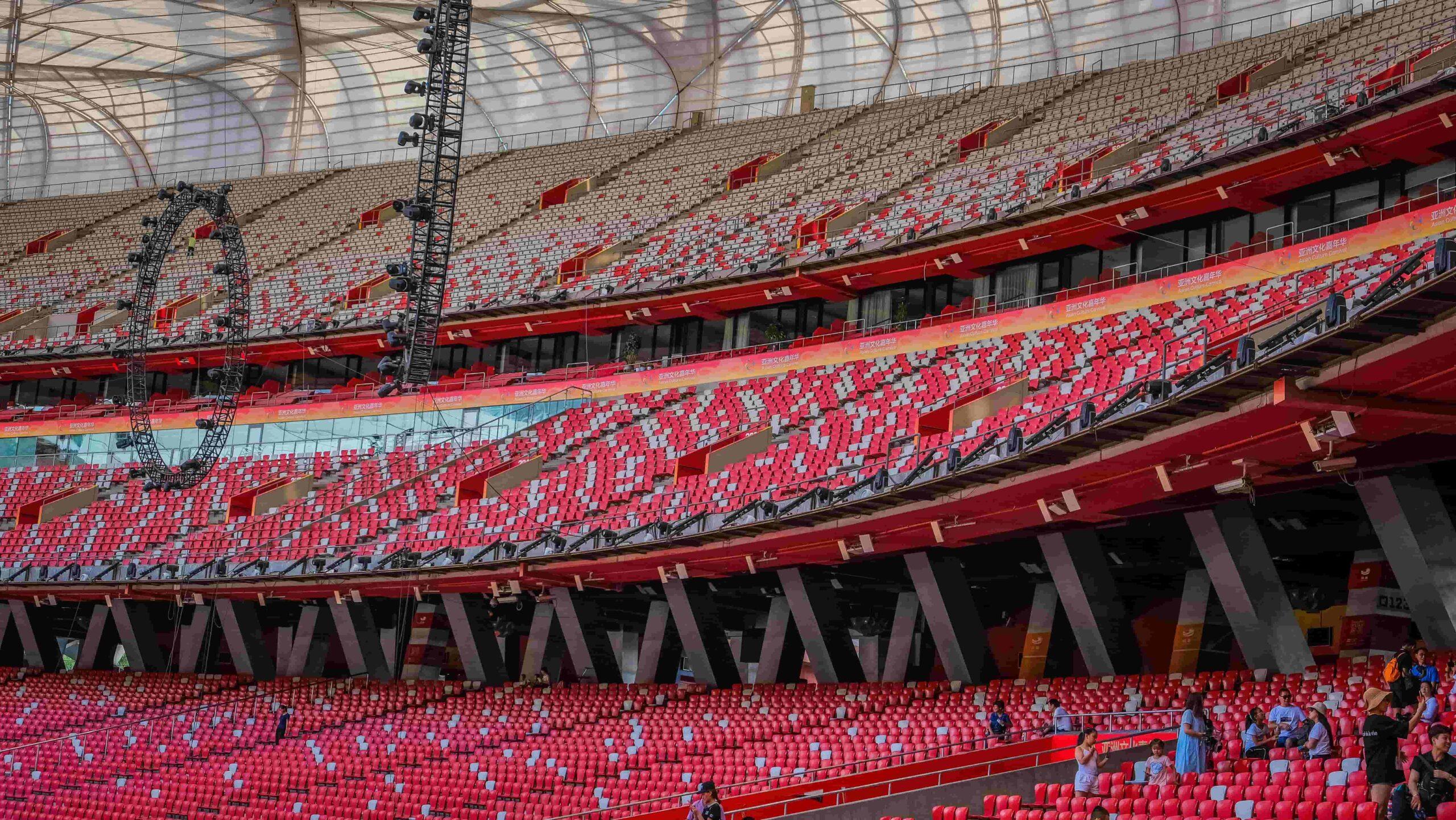In the heart of Ahmedabad, India, stands a colossal structure that transcends the boundaries of sports and architecture—the Narendra Modi Stadium. Formerly known as Sardar Vallabhbhai Patel Stadium, this sporting arena underwent a transformative overhaul, redefining the landscape of Indian sports and capturing the world’s attention. Named after the current Prime Minister of India, Narendra Modi, this stadium is not just a venue for cricket but a symbol of grandeur, modernity, and the country’s commitment to excellence.
The Genesis of Transformation:
The journey of the Narendra Modi Stadium began with a vision to create a world-class facility that would not only be a cricket stadium but a multi-purpose arena capable of hosting a variety of events. The ambitious project was initiated in 2015, and after years of meticulous planning and execution, the revamped stadium was unveiled to the public on February 24, 2021.
Architectural Marvel:
At the heart of the Narendra Modi Stadium‘s allure is its architectural brilliance. Designed by the renowned firm Populous, the stadium boasts a seating capacity of over 132,000, making it the largest cricket stadium in the world. The structure’s unique feature is its semi-spherical design, resembling a coliseum from ancient times, with three distinctive tiers of seating that create a visually stunning and immersive experience for spectators.
The innovative use of materials, including steel and concrete, not only enhances the stadium’s aesthetic appeal but also ensures structural integrity. The blend of tradition and modernity is evident in the design, as the stadium pays homage to India’s rich cultural heritage while embracing contemporary architectural principles.
Eco-Friendly Initiatives:
In an era where sustainability is paramount, the Narendra Modi Stadium stands as a testament to India’s commitment to environmental responsibility. The stadium incorporates various eco-friendly features, including rainwater harvesting systems, solar panels, and energy-efficient lighting. These initiatives not only reduce the stadium’s carbon footprint but also set a precedent for future construction projects in the country.
Technological Advancements:
The Narendra Modi Stadium is not just a feast for the eyes but also a technological marvel. Equipped with state-of-the-art facilities, it provides an immersive experience for both players and spectators. From cutting-edge LED displays to advanced sound systems, every aspect of the stadium’s technology has been carefully curated to enhance the overall experience.
The introduction of LED lights is particularly noteworthy, as they illuminate the stadium, creating a vibrant and dynamic atmosphere during matches and events. This not only adds to the visual spectacle but also contributes to the overall energy efficiency of the stadium.
Versatility Beyond Cricket:
While cricket remains the primary focus of the Narendra Modi Stadium, its design allows for versatile usage. The stadium has hosted a variety of events, including cultural programs, concerts, and other sports competitions. This flexibility ensures that the stadium remains a hub of activity throughout the year, contributing to the cultural and social fabric of Ahmedabad.
Historical Significance:
Beyond its architectural and technological prowess, the Narendra Modi Stadium holds historical significance. Named after Sardar Vallabhbhai Patel, a key figure in the Indian independence movement, the stadium pays homage to one of the country’s most revered leaders. The renaming of the stadium to honor Narendra Modi, the current Prime Minister, reflects the political landscape of India and adds another layer of historical context to the venue.
International Showcases:
The Narendra Modi Stadium has rapidly become a preferred venue for international cricket events. Its vast seating capacity, coupled with world-class amenities, makes it an ideal choice for hosting high-profile matches. The stadium’s debut on the international stage was marked by the third Test match between India and England in February 2021. Since then, it has hosted various domestic and international matches, further solidifying its status as a cricketing hub.
Challenges and Criticisms:
While the Narendra Modi Stadium has garnered widespread acclaim, it has not been without its share of criticisms and challenges. The sheer scale of the project, coupled with the rapid pace of construction, raised concerns about environmental impact and displaced communities. Critics argue that the focus on creating a monumental structure might have overshadowed the need for sustainable development and community engagement.
Additionally, the renaming of the stadium has been a topic of debate, with some praising it as a fitting tribute to a prominent leader, while others view it as a politically motivated decision. These controversies, however, do not negate the stadium’s architectural achievements and its positive impact on the sports and entertainment landscape in India.
Legacy and Future Prospects:
As the Narendra Modi Stadium continues to host iconic events and showcase the best of Indian and international cricket, its legacy grows with each passing day. The stadium represents more than just a venue for sports; it symbolizes India’s aspiration for excellence and its ability to compete on the global stage.
Looking ahead, the Narendra Modi Stadium is poised to play a pivotal role in shaping the future of sports and entertainment in India. Its adaptability, cutting-edge technology, and commitment to sustainability set a standard for future stadium projects, both in India and around the world. As the sporting world evolves, the Narendra Modi Stadium stands as a beacon of progress and a testament to the nation’s dedication to fostering a culture of sporting greatness.







